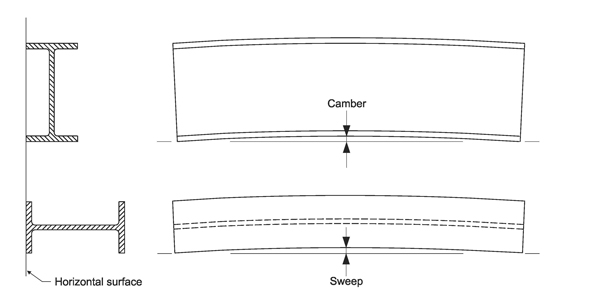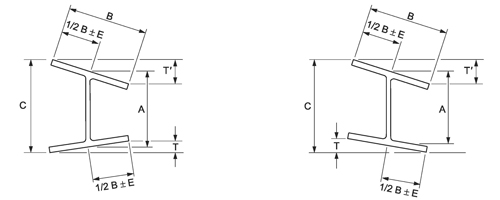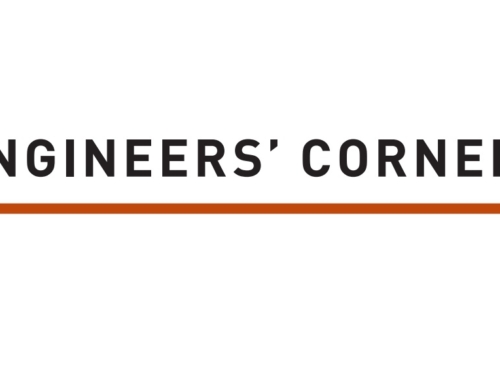Tolerances on hot-rolled steel members include permissible variations in the mass, area, length, cross-sectional dimensions (depth and flange width), straightness (camber and sweep), and other geometric properties. Manufacturing tolerances are given in CSA Standard G40.20, which in turn refers to ASTM A6/A6M for structural shapes.
A summary of the basic tolerances can be found on pages 6-15 to 6-21 in the Handbook of Steel Construction, 11th Edition. Tables are provided for hot-rolled, welded and hollow structural sections.
For example, the camber is a deflection measured along the depth of a section, while sweep is measured along the width, as shown in Figure 1. Out-of-straightness tolerances are typically expressed as a function of the member length, L.

Camber and Sweep
Figure 1
As shown on Figure 2, permissible variations in cross-sectional dimensions are defined for the depth, A, flange width, B, out-of-square, T + T’, web off-centre, E, and maximum overall depth at any cross-section, C. For W-shapes, the dimensional tolerances vary according to the section depth, with one set of tolerances given for sections depths of 310 mm or more, and another for sections depths under 310 mm.

Cross-Sectional Dimension Variations for W-Shapes
Figure 2





